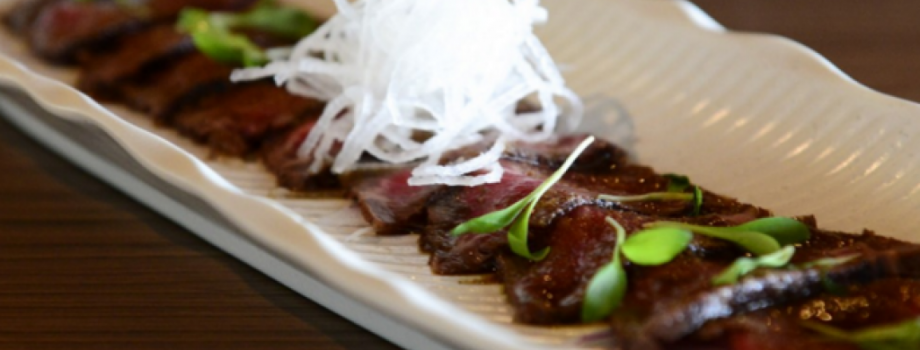The discovery of umami as a taste came in 1907 by Japanese chemical professor, Kikunae Ikeda. It’s a fascinating piece of the gastronomic evolution puzzle, making sense of why we love the food we love.
If it’s been some time since you sat in science class, here’s a quick refresher: looking at your tongue, you’ll see the surface is covered with several hundred rough-looking bumps. These bumps are called papillae and each papilla contains taste buds.
Taste buds are the all-important link between the tongue and the brain. They contain receptor cells (where the chemical chain reaction responsible for taste perception takes place), and each are genetically coded to provide a pathway to one taste only.
Taste is the initial factor in deciding whether or not to continue eating what we put inside our mouths. It includes flavour, a multisensory effect, and studies the aroma, texture, temperature, intensity, and even the memories and emotions evoked.
When Ikeda noticed the particular taste in asparagus, tomatoes, cheese, meat and dashi (a rich stock commonly used in Japanese cooking), he pinpointed glutamate and a group of chemicals called ribonucleotides as the source of the unique flavours. He learnt that by combining certain ingredients, a dish could be enhanced to hit more flavour points than the sum of its parts, a process he called “umami” – meaning “deliciousness”.
Ikeda wasted no time capitalising on his find and in 1909, he partnered with an iodine processor to patent a commercial MSG-based seasoning (the sodium salt of glutamic acid), as well as a method of extracting MSG from wheat. His hope was to offer an easy way to enhance the taste of nutritious but non-descript homemade meals and thus improve the overall health of the Japanese people. It’s ironic then that for many, MSG as a food ingredient is today code for junk food, a sad result of it being used to make cheap, nutritiously-weak foods taste better.
Umami as the fifth taste
Traditionally, it has been thought that our sense of taste is comprised of four primary tastes: sweet, sour, salty and bitter. When the taste cells are stimulated, they send messages through three specialised taste nerves to the brain, where a single taste is identified. These flavours can, however, be combined to create something special, such as Asia’s common combining of sweet and sour and India’s love for sweet and bitter.
Umami is sometimes thought to be a combination of flavours but it’s now identified as its own unique flavour. It’s what is sometimes referred to as “savoury” and corresponds to the flavour of glutamates. It cannot be described simply by combining the other four flavours, as it it carries with it an emotional response that’s truly isolated.
Ikeda is famous for saying, “Those who pay careful attention to their tastebuds will discover in the complex flavour of asparagus, tomatoes, cheese and meat, a common and yet absolutely singular taste which cannot be called sweet, or sour, or salty, or bitter… it’s umami.”
The fifth taste – umami – is that deep, dark, meaty intensity that distinguishes seared beef, soy sauce, ripe tomato, Parmesan cheese, anchovies and mushrooms. It hits the back of your throat, leaving you craving more. It is present every time the molecular compounds in glutamic acid bind to specific tongue receptors.
Umami in Japanese cooking
Umami shouldn’t be associated with bold, powerful flavour bombs and instead should be linked to uncomplicated foods that taste great. The foods in which umami is present are commonly used in Japanese cooking, and include ingredients such as kelp, bonito, dry mushroom, mirin, miso, soy sauce, and rice vinegar. All complex and delicious, they produce subtle, balanced, even virtuous flavours and need only be used sparingly to produce dishes that are beyond tasty.
Japanese cooking is simple. According to Kazu Katoh, the President of the Organisation to Promote Japanese Restaurants Abroad (JRO), Japanese cooking is about extracting, and should be about tasting good, sleeping well and clean bowel movements. He describes umami as “something that’s kind to the body” and suggests it “helps you wake better in the morning”. It’s “feel-good” eating at its best and has to do with the entire digestive process.
Adam Fleischman, the genius behind the US-based Umami Burger chain agrees, saying that the Japanese define umami as “an overall harmonious state of perfection where the ingredients come together, a really rounded and harmonious dish”.
The Japanese understanding of umami is far beyond the Western understanding, but umami is no longer a badge of pride that only the Japanese wear. It’s now universally known as the official fifth taste. It’s one of the biggest global trends in culinary creativity. It’s deliciousness.






